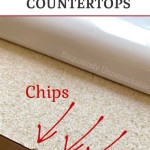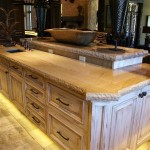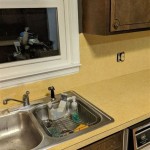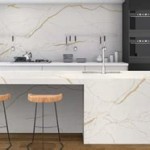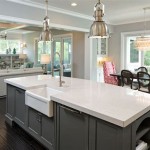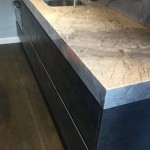Best Paint for Granite Countertops: A Comprehensive Guide
Granite countertops, prized for their durability and aesthetic appeal, are a common feature in many homes. However, dated colors or patterns can sometimes necessitate a refresh. Painting granite countertops presents a cost-effective alternative to full replacement. The selection of the appropriate paint system and meticulous application techniques are critical for achieving a durable and visually appealing result. This article will explore the key considerations and recommended paint types for transforming granite countertops.
Understanding the Challenges of Painting Granite
Painting granite is not as straightforward as painting other surfaces like wood or drywall. The inherent properties of granite, specifically its smooth, non-porous nature, pose significant challenges to paint adhesion. Without proper preparation and the use of suitable primers and paints, the paint film is likely to chip, peel, or scratch easily. The surface of granite is generally less receptive to bonding compared to materials designed for paint adhesion. Furthermore, the painted surface must withstand daily use, including exposure to moisture, cleaning agents, and potential impacts from kitchenware.
The type of sealer previously applied to the granite also affects paint adhesion. Some sealers create a highly repellent surface that resists any kind of bonding, even with specialized primers. Identifying the existing sealer type and taking appropriate measures to remove or neutralize it is essential for successful painting.
Essential Preparatory Steps
Thorough preparation is paramount before applying any paint to granite countertops. Neglecting these steps will invariably lead to premature paint failure. The process begins with a deep cleaning of the countertop surface. This involves using a degreasing cleaner to remove any grease, oil, or food residue that may have accumulated over time. Abrasive cleaners should be avoided, as they can scratch the granite surface.
After cleaning, the granite should be thoroughly rinsed with clean water and allowed to dry completely. Once dry, the surface should be lightly sanded using a fine-grit sandpaper (e.g., 220-grit or higher). The purpose of sanding is not to remove the existing finish but to create microscopic scratches that will improve the adhesion of the primer. Care should be taken to avoid excessive sanding, which can damage the granite.
Following sanding, all sanding dust must be meticulously removed. This can be achieved using a tack cloth or a clean, damp cloth. Ensuring a dust-free surface is crucial for optimal primer adhesion.
The next step involves applying a high-quality bonding primer specifically designed for non-porous surfaces. These primers typically contain specialized resins that promote adhesion to slick surfaces like granite, glass, and tile. Multiple thin coats of primer are preferable to a single thick coat, allowing each coat to dry thoroughly before the next is applied. The primer should be allowed to cure fully according to the manufacturer's instructions before proceeding to the painting stage.
Protecting surrounding areas is another crucial aspect of the preparation process. Use painter's tape to mask off any areas that should not be painted, such as backsplashes, sinks, and appliances. Drop cloths or plastic sheeting should be used to cover countertops and floors to protect them from paint splatters.
Recommended Paint Types for Granite Countertops
The selection of an appropriate paint type is critical for long-lasting results. While several paint options are available, epoxy paints and specialized countertop painting kits are generally considered the most suitable choices for granite countertops.
Epoxy Paints: Epoxy paints offer exceptional durability and resistance to chemicals, stains, and abrasion, making them a popular choice for high-use surfaces like countertops. These paints are typically two-part systems consisting of a resin and a hardener, which must be mixed together before application. Once cured, epoxy paints form a hard, durable film that is highly resistant to damage. However, epoxy paints can be more challenging to apply than other types of paint, requiring careful mixing and application techniques. They also tend to have a shorter working time, meaning they must be applied quickly before they begin to harden. Epoxy paints also give off strong fumes during application, requiring adequate ventilation and appropriate respiratory protection.
Countertop Painting Kits: Countertop painting kits are specifically designed for refinishing countertops and typically include all the necessary materials, such as primer, paint, sealer, and application tools. These kits often use acrylic-based paints formulated for enhanced adhesion and durability on non-porous surfaces. Countertop painting kits are generally easier to use than epoxy paints, making them a good option for DIY enthusiasts. However, the durability and chemical resistance of acrylic-based paints may not be as high as those of epoxy paints. The kits also often provide faux granite or stone finishes, which may not appeal to everyone seeking a solid color transformation.
Acrylic Polyurethane Paints: Acrylic polyurethane paints offer a good balance of durability, ease of application, and aesthetics. These paints provide a hard, durable finish that is resistant to scratches, stains, and chemicals. They are also available in a wide range of colors and finishes, allowing for greater design flexibility. Acrylic polyurethane paints are water-based, making them easier to clean up and less likely to emit harmful fumes. However, they may not be as resistant to impact or high temperatures as epoxy paints. Multiple coats are typically required to achieve adequate coverage and durability.
Other Paint Considerations: It is generally not advisable to use standard latex or oil-based paints on granite countertops. These paints lack the necessary adhesion and durability to withstand the demands of a countertop surface. They are also more prone to chipping, peeling, and staining, leading to premature failure. Chalk paints, while aesthetically appealing for certain applications, are also not suitable for countertops due to their porous nature and lack of durability. If chalk paint is considered, it would require many layers of sealant rendering the initial porous benefit moot.
Application Techniques for Optimal Results
Proper application techniques are crucial for achieving a professional-looking and durable finish. Regardless of the chosen paint type, the paint should be applied in thin, even coats using a high-quality brush or roller. Avoid applying thick coats, as this can lead to drips, runs, and uneven drying. Multiple thin coats are always preferable to a single thick coat.
When using a brush, choose a brush with synthetic bristles designed for use with the selected paint type. Natural bristle brushes are generally not recommended for water-based paints, as they can absorb water and become limp. Apply the paint with smooth, even strokes, overlapping each stroke slightly to avoid gaps or streaks.
When using a roller, choose a roller with a short nap to minimize texture. Load the roller with paint evenly and apply the paint to the surface in a consistent manner. Overlapping each roll will maintain uniform coverage.
Allow each coat of paint to dry completely before applying the next coat. Follow the manufacturer's instructions for drying times. Lightly sand the surface between coats using a fine-grit sandpaper to remove any imperfections and improve adhesion. Be sure to remove all sanding dust before applying the next coat.
Applying a clear topcoat sealer is essential for protecting the painted surface and enhancing its durability. Choose a sealer specifically designed for use over painted surfaces and follow the manufacturer's instructions for application. Multiple coats of sealer may be necessary to achieve adequate protection. Allow the sealer to cure fully before using the countertop.
Post-Painting Care and Maintenance
Proper care and maintenance are essential for prolonging the life of the painted granite countertop. Avoid using abrasive cleaners or harsh chemicals, as these can damage the paint finish. Clean the countertop regularly with a mild soap and water solution. Wipe up spills immediately to prevent staining.
Use cutting boards when preparing food to avoid scratching the painted surface. Avoid placing hot pots or pans directly on the countertop, as this can cause the paint to blister or peel. Use trivets or hot pads to protect the surface from heat. Regular maintenance and preventative measures are crucial for preserving the integrity and appearance of the painted granite countertop.
Routinely inspect the painted surface for signs of wear and tear, such as chips, scratches, or peeling. Address any damage promptly to prevent it from spreading. Small chips or scratches can often be touched up with matching paint. If the damage is extensive, the entire countertop may need to be repainted.

100 Update Ugly Granite Countertop W Contact Paper Paint Or Epoxy You Ll Want To See This

Diy Marble Epoxy Over Old Granite Countertops How To Do

Paint Granite Countertops To Look Like Marble Jennifer Rizzo

How To Make Granite Countertops With A Paint Roller Stone Coat Epoxy Youtube

What Kind Of Paint Do You Use On Countertops The Countertop Factory

Painted Granite Countertops 2 Year Durability Update

Can You Paint Granite Countertops Family Handyman

Paint Granite Countertops To Look Like Marble Jennifer Rizzo

How To Paint Bathroom Countertops Faux Stone Diy Goodbye Granite Youtube

Expert Tips For Choosing The Best Kitchen Cabinet Paint Color

